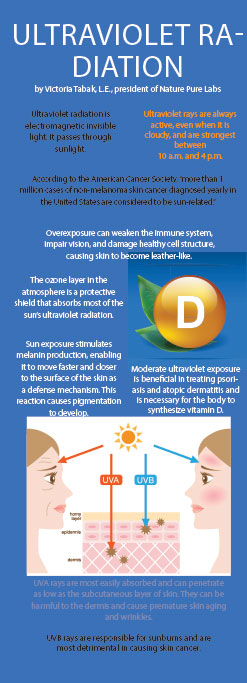Moderate ultraviolet exposure is beneficial in treating psoriasis and atopic dermatitis and is necessary for the body to synthesize vitamin D.
Sun exposure stimulates melanin production, enabling it to move faster and closer to the surface of the skin as a defense mechanism. This reaction causes pigmentation to develop.
UVA rays are most easily absorbed and can penetrate as low as the subcutaneous layer of skin. They can be harmful to the dermis and cause premature skin aging and wrinkles.
UVB rays are responsible for sunburns and are most detrimental in causing skin cancer.
Ultraviolet rays are always active, even when it is cloudy, and are strongest between 10 a.m. and 4 p.m.
Overexposure can weaken the immune system, impair vision, and damage healthy cell structure, causing skin to become leather-like.
The ozone layer in the atmosphere is a protective shield that absorbs most of the sun's ultraviolet radiation.

